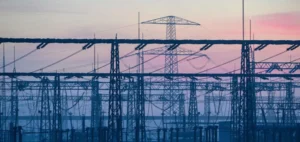The Canada Infrastructure Bank (CIB) has secured an equity investment of CAD 217 million to facilitate the construction of a transmission line linking Nova Scotia and New Brunswick. This project aims to improve the reliability of interprovincial power grids and support the expansion of renewable energy production in both provinces.
This funding will enable Nova Scotia to build a 160-kilometre, 345-kilovolt transmission line, following the route of the existing connection between Onslow (Nova Scotia) and Salisbury (New Brunswick). The interconnection is part of a broader effort to strengthen the region’s energy infrastructure, enhance grid resilience, and foster electricity exchanges between the provinces.
Partnership with Indigenous Communities
In parallel, the CIB is collaborating with the Wskijinu’k Mtmo’taqnuow Agency Ltd. (WMA), an economic partnership owned by the 13 Mi’kmaq nations of Nova Scotia. The CIB and WMA aim to finalise an equity loan to enable the latter to acquire a stake in the project. This financing is part of the CIB’s Indigenous Equity Initiative, which aims to increase Indigenous participation in infrastructure projects.
Economic Impact and Employment
The project is expected to generate nearly 587 direct and indirect jobs during its construction, while contributing CAD 105 million to the Gross Domestic Product (GDP). The works are scheduled for completion by autumn 2028. Furthermore, the CIB’s investment is projected to save electricity consumers in Nova Scotia approximately CAD 200 million.
The Strategic Role of the Interconnection
This transmission line is part of a larger project aimed at improving energy connectivity in the Atlantic region and strengthening Canada’s overall energy security. By increasing the capacity of the interprovincial power grid, the project facilitates electricity exchanges between the two provinces while supporting the transition to cleaner energy sources. The project is also seen as an example of interprovincial collaboration in the energy sector.
A First for the Canada Infrastructure Bank
This marks the CIB’s first equity investment, having previously committed CAD 743 million across five energy projects in the Atlantic region. These projects include wind farms, energy storage infrastructure, and other essential interconnections. As part of its clean energy sector, the CIB aims to achieve a target of CAD 10 billion in investments for new energy projects, including renewable energy, energy storage, and district heating systems.
Federal Support for the Energy Transition
The federal government is actively supporting the project through several financing mechanisms, including a CAD 3.1 million pre-development programme to support preparatory activities related to the interconnection. This support aims to strengthen the energy transition towards a more reliable, clean, and affordable power grid for Canadians. It is part of a long-term vision for grid modernisation, aligned with the country’s climate and economic goals.






















